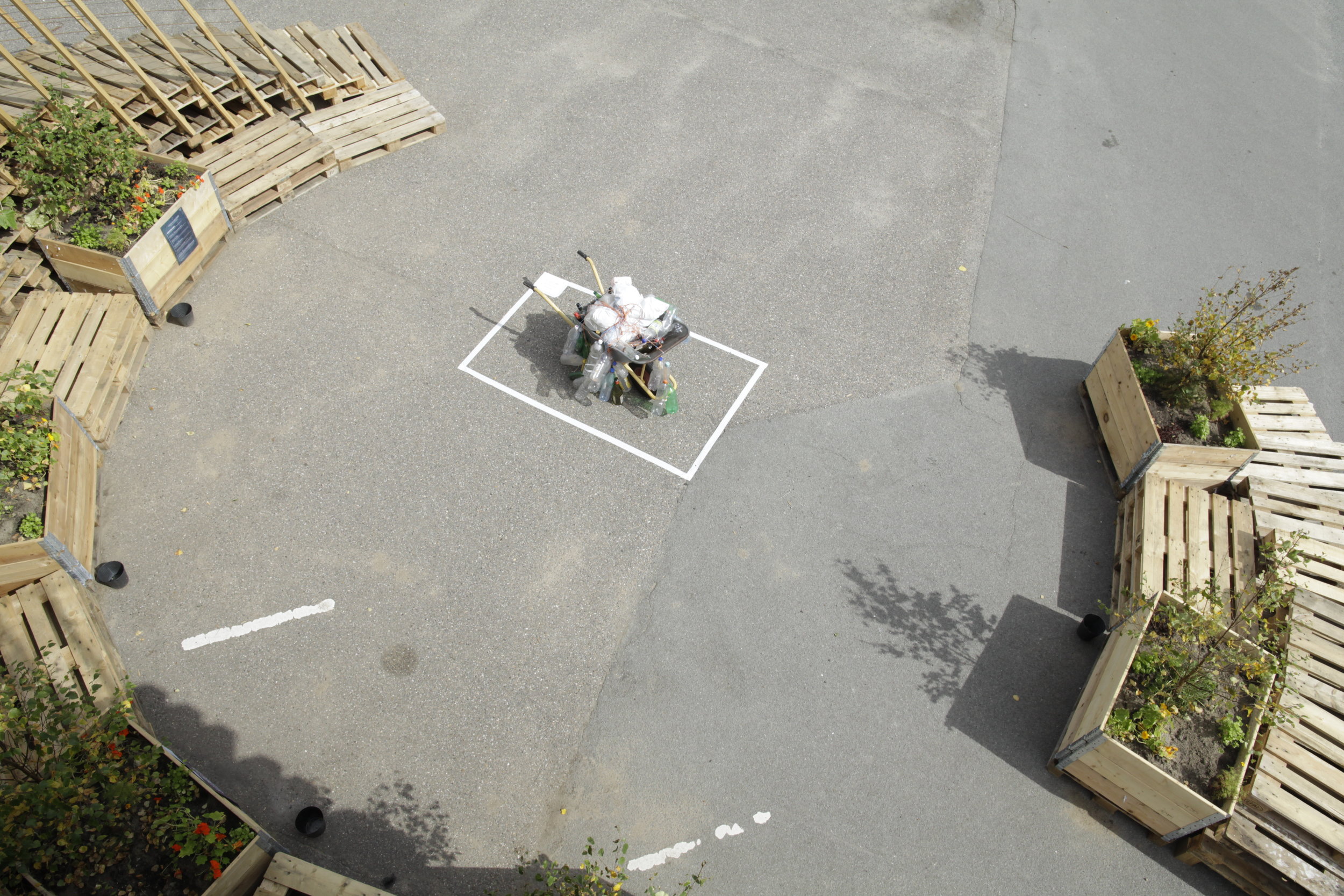We can stay here while we wait - Voices in the Anthropocene
In order to reflect upon the changing nature of our planet, as well as the relationship of our species to itself and its surroundings, the Independent AIR would like to invite you to think about the Anthropocene as a pulsating and kaleidoscopic construct- one deeply immersed in history, politics and philosophy.
Four international artists were united for 6 months at The Independent AIRs residency in Portugal at Moinho da Fonte Santa, during which they researched and explored the Anthropocene in its different manifestations.
The residency has resulted in an ambitious programme to be launched in Aarhus (Denmark) beginning on the 11th of August 2017, consisting of a group exhibition, an anthology, artist talks as well as poetry readings, sonic interventions and lectures.
Exhibiting artists: Bärbel Praun, Clément Verger, Sissel Thastum in collaboration with sounds artist Alexander Holm, Olafur Eliasson, Michele Palazzi and Adam Jeppesen.
The Exhibition
The exhibition explores the role and critical voice of art in the public debate around the Anthropocene. It encourages the viewer to think about new roads to embark on, as well as new values worth exploring. Through photography, video and sculpture the artists examine the Anthropocene as a complex interwoven reality- one deeply embedded in history, politics and philosophy. It will be an immersive and visually striking journey through contemporary reflections on a deeply haunting subject.
Exhibition dates:
Silkeborg, Denmark 10. November - 2. December, 2017
Aarhus, Denmark 12. August – 2. September, 2017
Initiation & artistic direction: Sissel & Line Thastum
Environmental advisor and project coordinator: Line Thastum
Curation/exhibition coordination: Sissel Thastum & Maya Byskov
Project coordinator, PR & press: Stinus Duch
Symposium nights
During the period of the exhibition, different events will take place: among others, the young poets Liv Sejrbo Lidegaard and Theis Ørntoft reading their poetry within the literary wave of return to nature. A Deep listening concert with Morten Svenstrup: immersive and meditative, where the visitors will be guided through a planetary soundscape. Professor Finn Arler and Mickey Gjerris will discuss and debate "hope and sustainability in the Anthropocene".
The Anthology
The Independent AIR has edited an anthology with poetic, literary, scientific and philosophical texts to accompany the artistic exploration of the Anthropocene. The book is constructed as a choir with different voices, that while singing in different tones and depths, comes together in unison to comment and expand on the Anthropocene as a living and critical subject.
The limited edition book can be bought through info@theindependentair.com
We can stay here while we wait - Voices in the Anthropocene, Aarhus, Denmark 12.8-2.9.2017
Exhibited projects
Sissel Thastum No you without Mountains, without Sun, without Sky
Video installation 18:31 min loop, 1920 x 1080, HD, H.264, AAC, 4-channel sound.
Sissel Thastum (b. 1987 DK), is a photographic artist living and working in Berlin. Her latest projects are interested in exploring a connection and kinship between humans and nature, a connected spirit- or a pre-historic creaturely brotherhood - according to the French writer and philosopher Bataille. Through meditative exercises, stillness and presence, she performs and seeks a forgotten bond among sentient and non-sentient beings. For the installation No you without Mountains, Without Sun, Without Sky she has collaborated with sound artist and musician Alexander
Holm to create a tense and enveloping sensory experience.
Text: Maya Byskov
Still from the video installation No you without Mountains, without Sun, without Sky
Bärbel Praun I have decided to fall silent
Bärbel Praun's (b. 1978 DE) current work exists fragmented between performance, photography and sculpture. Her latest projects take its point of departure in trash, and particularly in plastic, as a material from where to elaborate artistically. With a sense of desperate frustration, Praun invites us to reconsider our relation to plastic and to accompany her on a lonely journey of understanding and confrontation. I have decided to fall silent is the name of the project on view here, composed of a written piece, a video performance accompanied with an installation of collected items from the beach and the Impermanent Sculptures (of Indestructible Objects). This sculptural and photographic work refers to the persistent and non-biodegradable qualities of the material, which are shaped into temporary sculptures in the landscape.
Text: Maya Byskov
Clément Verger Endeavour
Clément Verger (b. 1988 FR), lives and works in Paris. His work explores and reveals the traces of human activities on planet earth – the Anthropogenic landscapes- rendering visible those historical actions, which have created and shaped the nature around us. For the past years he has used a methodology closely associated with the natural sciences to uncover our imprint on earth. In this exhibition we see a small part of the larger project Endeavour in which Verger traces the introduction of Eucalyptus to the European mainland in the late 18th C. The invasive species is a metaphor
through which the artist articulates and illustrates the complex interdependent nature of mans activities on earth.
Text: Maya Byskov
Michele Palazzi Finesterrae
Michele Palazzi (b. 1984 IT) lives and works in Rome. His work has previously addressed the impact of economic development, migratory patterns and cultural appropriation in Eastern societies.
Through his meandering photographic essay Finisterrae, we are confronted with an eerie society, a forced heterotopia where solitude, anxiety and an apocalyptic religious iconography
develops into a fictional society. It raises questions about the types of societies we are creating and the areas left behind by economic development.
Text: Maya Byskov

















































